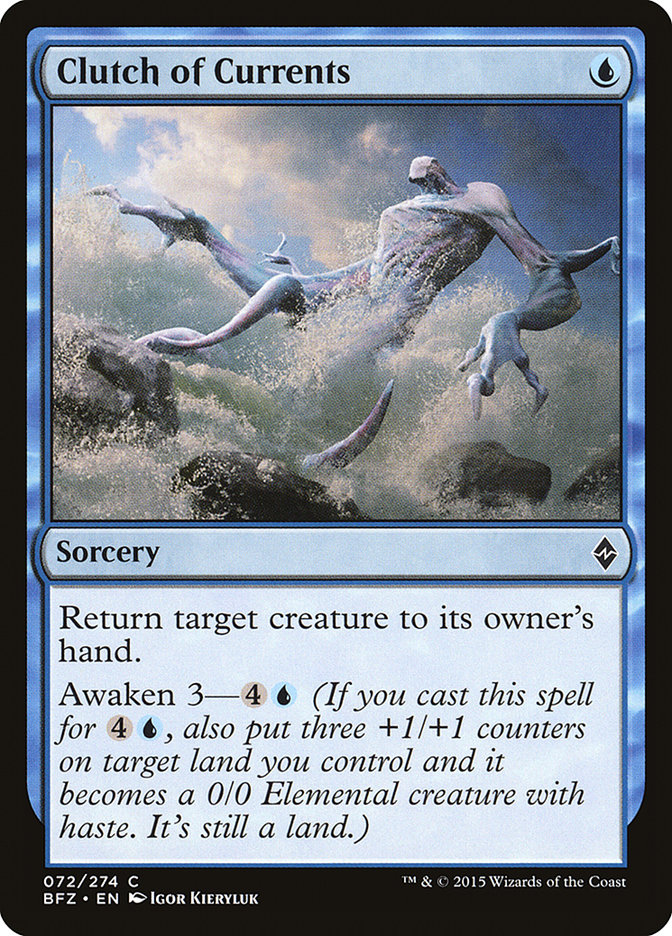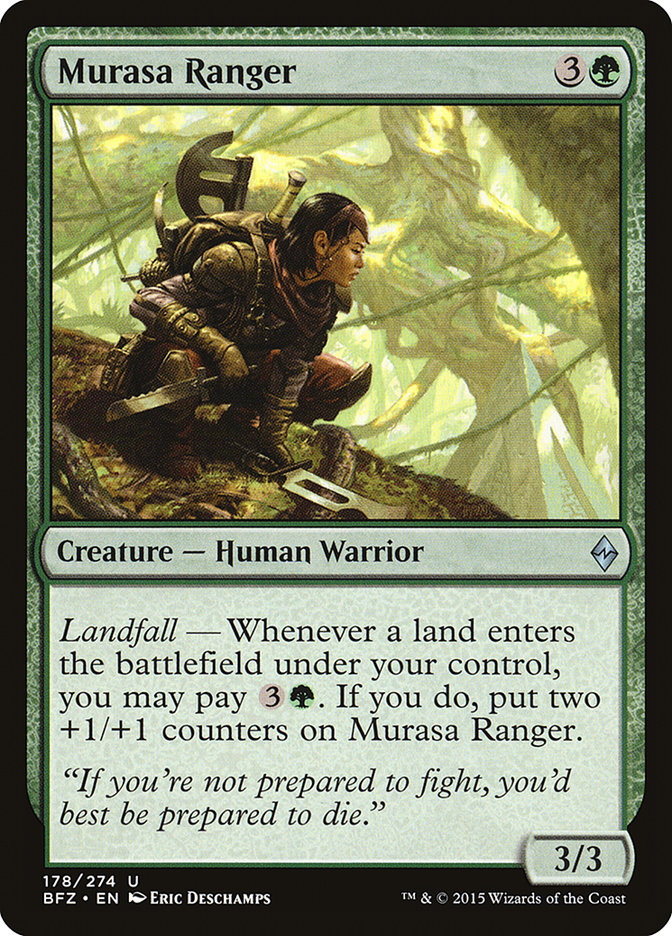Last weekend I made my way to Grand Prix Madison. This by itself was a bit of an achievement*, but I felt in deckbuilding I had done a bunch of good
things.
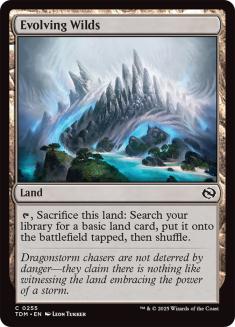
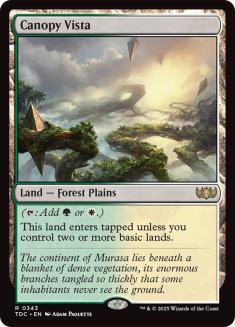
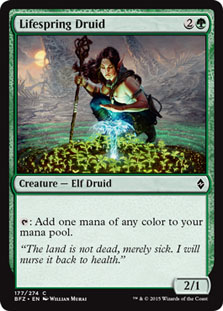
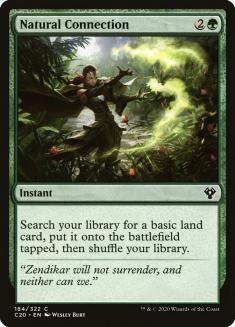

The real unique thing my Sealed pool accomplished was having great mana fixing. I had two Evolving Wilds, a Canopy Vista, a Lifespring Druid, and a Natural
Connection. That allowed me to splash.
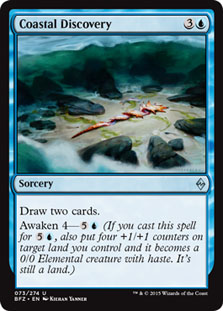
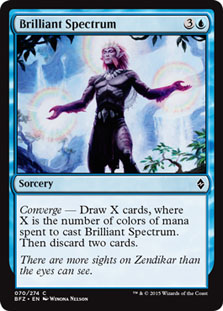

The thing that jumped out to me immediately was splashing blue card draw. Coastal Discovery was a no brainer. Mulldrifter etc etc. The other card I
splashed for was Brilliant Spectrum. This might seem odd at first, as my deck ended up being only three colors, but there was a pretty solid logic behind
it.
I was a ramp deck. I had a bunch of big spells and a bunch of mana sources. Traditionally, those decks can have issues in the end game when their big
threat gets answered, when you start drawing your weaker ramp against your opponent’s average but slightly better than blank spells. Cycling through cards
is great in those scenarios since you just get to your next big thing fast enough to matter.
Oh yeah, I also opened this dude. Was, is, and will continue to be nice.
And I promptly went 2-3 after my byes and missed day two. My deck, despite looking like it would have crushed in any other Limited format, was just bad.
Fortunately, I was able to figure out why.
Every card you draw in this format is action, and that has a lot of implications.
Card Advantage Works the Reverse of Normal
I was super excited by Coastal Discovery when the set first came out. It’s just Mulldrifter! How is that not amazing?
Turns out the more I play with it, the more I felt extremely unimpressed by the card. At first I thought it was because it might be too clunky. Going from
Divination to Inspiration on the default mode of the card is a big jump, and the fact that it is “seven” mana to awaken a Coastal Discovery and wind up
with an untapped creature (compared to Mulldrifter’s five) is also a jump.
But the third or so time I drew the card, I realized the real issue:
I kept having things to do. I didn’t need more of them.
It’s really hard to run out of cards in this format. There are a lot of different things contributing to this, like higher curves and activated abilities
on everything, but they all tie back to the land theme. All of this ends up with you having two-to-four cards in hand going into turn 6. Coastal Discovery
turns into more of an eight- or nine-drop because that is when you start really needing the extra action.
Mire’s Malice, on the other hand, really benefits from this, and I probably should have splashed both my copies. When you normally Mind Rot someone with
four cards in hand, they have some easy discards. In this format it actually hits relevant things at basically every point. This is especially relevant in
the turn 6 comparison of awakened Mire’s Malice versus Awakened Coastal Discovery, where one has a pretty relevant impact on the game in the short turn by
limiting your opponent’s options, and the other takes multiple turns for you to actually deploy the things you drew.
Mournwhelk > Mulldrifter. Welcome to the future.
Everyone is Proactive
This is a lesson coming from the now defunct World of Warcraft trading card game.
For the most part, that game was the same as Magic, but your “lands” all had bonus abilities. Most of them drew cards.
The result was that control basically didn’t exist that weren’t Stax decks. You could make exchanges, but it was too easy for aggro to be a little ahead at
each point and really too hard for the control to run the aggressive player out of cards. Eventually enough damage would just slip through and the control
deck would lose.
In Magic, the same thing happens in Battle for Zendikar Limited. The defensive options aren’t great to begin with, and your opponent isn’t going
to “stumble” at some point and not deploy something so you can stabilize. Well, unless they miss a land drop, but the way to punish that is definitely just
attacking them and not giving them a chance to hit. Building slowly to something big is way worse than actually ramping right to it and putting things onto
the battlefield that matter. The only kind of stabilizing that matters is just casting something bigger and bashing them with it.
The one difference between the WoWTCG example I gave and Magic is board stalls. In the other game, you chose what you attacked, meaning all creatures
basically had provoke and double blocking didn’t exist. If a bunch of stuff ended up on board, it would all trade off. In Magic, the defending player
choosing how to line creatures up means that at some point if enough stuff is on board, attacking becomes unprofitable. While landfall and rally are
abilities that boost your creatures on your turn and make attacking profitable, board stalls still occur. Having some number of cards that break the parity
there is important, but again, these are all proactive things that can attack through a big board.
Anything That is Reliably a Blank is Super Awkward
Eldrazi Devastor was a card I was really excited about at common. 8/9? It’s just bigger than everything else! It even tramples!
After a few games of looking at it in my hand waiting for the eighth land and wishing it was something else, I changed my mind.
While you are often flooded with options on what to do, a blank is still really bad. The number of sequences you can execute drastically falls, meaning you
are less able to play around everything your opponent has or could have. Given that there are so many potential blowouts in the format, having less room to
maneuver is a big deal.
Even when cast, the lack of flexibility is an issue. Too often an Eldrazi Devastator just walks you into a Clutch of Currents or other interchangeable
trick, losing you the game as you are now a full action behind on board.
The other card that fell into this trap was Oran-Rief Invoker. It seems like it should be the kind of card that is never blank. A 2/2 for two that is great
to draw lategame? How lucky! The problem is that in the four- or five-turn span where you don’t have eight mana and people are playing four-to-six-drops,
the card does nothing. Unless my deck wants the 2/2 or is capable of getting to eight mana really quickly via Hedron Archive or Eyeless Watcher, I want
nothing to do with Oran-Rief Invoker.
Available Mana is the Limiting Factor of the Format
As mentioned earlier, I was excited to have Natural Connection as a mana fixer during deck build. After playing games, I ended up cutting it for a basic
land during sideboarding every round. It should be good to ramp ahead a turn in my deck that has a solid curve all the way up to six, but more often it was
just a waste of three mana when I had actual things to do. Lands aren’t blanks, but this card just did the same thing as a land but at the cost of three
mana. There’s now only two cases I would consider playing the card: If I’m so heavy on landfall that it functions as a Tandem Tactics most of the time, and
if I’m four colors and really need it to work to cast some stupid rares like Planar Outburst.
Murasa Ranger was similarly terrible. Part of this is that your mana is usually tied up while you are playing lands in this format because things are all
pushed up on the curve, but the non-mana part was sizing. A 5/5 or 7/7 isn’t actually big enough to matter. You need to invest sixteen mana into this card
before it brawls an Eldrazi, and there just isn’t enough mana available to do that.
When in doubt, put together cards that build to something bigger and better.
Here are the things I ended up losing to, besides mulligans to five:
– Brian Braun-Duin’s U/R Devoid deck featuring Kozilek’s Channeler and Hedron Archive to cast eight- and seven-drops.
– R/W Allies
– G/R Landfall
Not rares. Not mythic uncommons. Good, strong synergies that added more to the board each turn than I did.
If both players always have action and are only constrained on deploying things based on their mana, you can get ahead by out card-qualitying people or via
tempo. Tempo is hard in this format since playing two spells a turn is hard. Card quality is also hard, as things are fairly flat and everyone has five-
and six-drops to cast to fight that war.
You can get ahead on card quality in a different way though: accumulated synergy. If your four-drop grants all of your creatures trample and your two-drop
gives them first strike, your cards are now better than your opponents, and they need a big bomb to swing things back into their favor. Similarly, ingest
turning on Processors makes them into cards that put you ahead multiple actions in one shot.
It’s hard to lean on this in Sealed, but I should have tried harder. Instead, I just jammed all of my best cards on raw power and was punished
appropriately. If I had tried to build even a few more small packets of synergy that I could draw to, my deck would have performed much better.
This last point is probably why people will remember Battle for Zendikar Draft fondly. The other things all make it so you actually get to play
Magic most of the time, but it’s important that beyond that you are doing cool things. There are certainly a lot of them here, and I’m really looking
forward to a week of drafts to find them all.
*Attempting to make it to Madison resulted in a travel story that is probably a solid C+, putting it just above the bar of being worth sharing.
While I did not arrive at Grand Prix Madison at the actual last possible moment, it was cutting it close. My original flight to Chicago was cancelled at
1am after a sequence of delays, and it turns out that the combo of “holiday weekend” and “Chicago marathon” meant that there was basically no way for me to
lock up a flight there until Sunday. I went with the desperation standby on a 6am flight which would get me to Madison around 9am Central time, which came
with a side of “don’t sleep and open Gideon in a Magic Online draft while sitting on the airport floor.” Obviously the 6am flight failed, leaving me with
the Hail Mary of getting on the 8:30am flight that had even more people on the wait list, as the previous flight was already oversold. Somehow I mised the
last slot on the flight, caught a connection, and made it to the event site just as Round 2 started at noon. How lucky, I even had time to shower after
deckbuilding.
Comically, there was a bit of a Balmer Peak effect here. I was completely non-functional between hours 20 and 27 awake, but I really started to come around
and do semi-coherent things for the next twelve hours after that.
There’s also a non-zero chance I fell asleep in the middle somewhere and completely forgot about it, or that the moderate amount of caffeine made me think
I was awake enough to function. It could also be that the classic Chicago fluorescent green relish has magical powers. Fortunately, I don’t think this is
something that will occur again, so I have no need to experiment and figure it out.
It’s times like this that I’m really glad I’m someone who is capable of laughing at my own misery. Sometimes you lose, but at least United Airlines made me
feel something.



